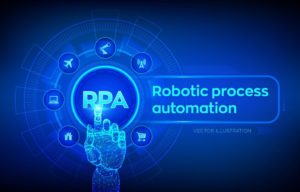Robotic process automation (RPA) is the practice of automating, thus making more efficient, repetitive tasks that would otherwise consume valuable human time using software bots or code. In contrast to people-driven processes, robotic process automation accomplishes the rare feat of never making human errors and being available 24 hours a day, seven days a week. Businesses typically use robotic process automation for tasks that are highly repetitive, allowing human employees to focus on challenges and aspects that require higher thinking. There are more benefits of RPA applications, which are listed below.
1. Cost-Effective
It is cost-effective as you start using robotics, you will reduce operational costs by 25-50 percent, and as previously stated, the robots will operate 24 hours a day, seven days a week. Having robots take over some of the manual labor that humans do could result in tangible benefits for the business. Automation can help you recover the cost in a short period of time, and then it’s all about profits.

2. Accuracy & Quality
It’s one of the convenient facts that Robots are reliable and reduce the possibility of error which results in increased accuracy. They will also work tirelessly and obey all commands, reducing the cases of re-works. These factors will also result in high-quality output. RPA increases organizational capacity by optimizing capabilities. So both the things, accuracy, and quality, will be excellent if we shift to RPA.

3. Consistency
You don’t have to worry about any factor, robotics is an extremely safe and non-invasive technology. That doesn’t interfere with the inherent systems and provides perfect consistency in performing the activities across the board hassle-free, each time and every time. Robotics will ensure proper and excellent consistency of work, you can rely upon them.

4. Improved Analytics
If you have adopted RPA, chances of having errors will reduce, and accuracy will increase. When there is error-free, accurate data from various sources, then the quality of analytics will automatically improve in the process, which will further result in better decision making, and overall to the betterment of the process execution.

5. Increased Employee Productivity
Client and customer satisfaction only leads to the improved business, and RPA ultimately frees humans and robots to do what they do best. Because RPA frees employees from mundane tasks, they can focus more on client and customer interaction, relationship management, and other activities where humans naturally excel. The end result is increase in employee productivity.

6. Improved Analytics For Workflow Management
There are a number of tracking systems for monitoring human employees – workflow analytics – but no human being can get identified and a fully automated process. A set up of a precise grid of activities and timelines, and the effectiveness of an RPA tool can measure down to the smallest task and time increment. Furthermore, by tracking the RPA system’s activities and accomplishments on a continuous basis, its planning and governance can be significantly increased – by a clear and precise metric.

7. Advanced Governance
An RPA system adheres to a precise and clear governance system. Indeed, establishing a well-thought-out governance structure is a critical step in successfully implementing the RPA platform. RPA software can manage your entire system. That is, it can constantly check, recheck, and monitor systems. An automated system can scan and flag any activity in an enterprise infrastructure that doesn’t match with the current governance framework, just as humans do now (but with all of the mistakes that humans make).

8. Improved Scalability
RPA solutions come with scalability in mind. No human team of professionals can compete their incredible activities to the level of an army of automated bots. Indeed, when it comes to scalability, the two teams, humans vs. bots, aren’t even close. For example, a set of automated robotic processes can be duplicated and programmed to perform a similar but slightly different set of procedures. Duplication and reprogramming can repeatedly occur, resulting in a swarm of active systems where there was previously only a handful.

9. Better Security
Few, if any, software systems are completely secure – hackers are constantly looking for flaws – but an automated robotic process has a clear advantage over a strictly human team. An RPA tool never forgets to log in, never forgets to log out, and never writes its password on the screen with a small piece of paper. It configures to “time out,” making a system inaccessible when it should be. The best feature is that, there’s a complete log file of all of its activities available, ensuring if any potentially dangerous activity happens, it gets documented.

10. A Clear Advantage Over Competitors
Given the power of flexible and highly scalable automation that RPA provides, any company that implements it will have a significant performance advantage over competitors who do not have such a system. RPA’s ability to perform a wide range of key essential tasks quickly and precisely makes a business far more nimble and capable of completing an aggressive task load.



















